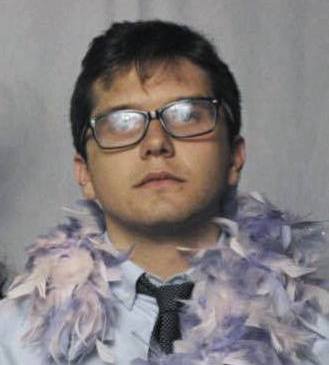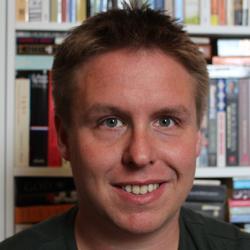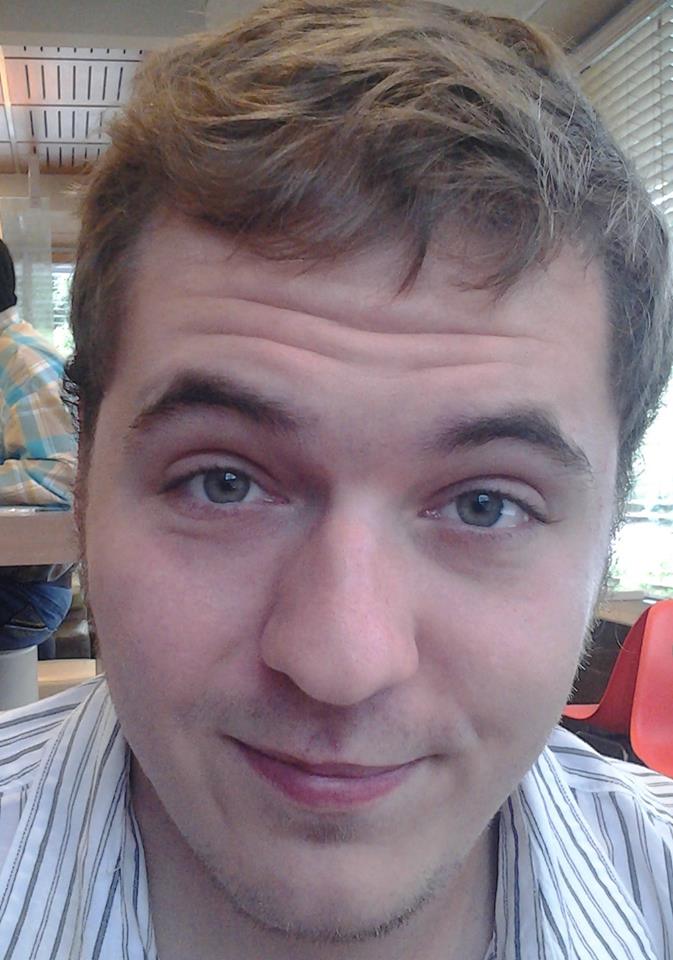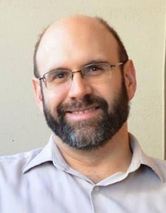Herewith a superb interview with Victoria Redel, the brilliant and prolific author of stories, novels and poems, also a former initiate of Captain Fiction himself, the irrepressible and undaunted Gordon Lish. Redel’s most recent books include Woman Without Umbrella (poems) and a story collection Make Me Do Things, both reviewed in NC. Conducting the interview is Jason Lucarelli, our resident Lish expert, conversant in all things Lishian, author of the foundational essays “The Consecution of Gordon Lish: An Essay on Form and Influence” and “Using Everything: Pattern Making in Gertrude Stein’s ‘Melanctha,’ Robert Walser’s ‘Nothing at All,’ and Sam Lipsyte’s ‘The Wrong Arm’.”
What is “story”? What is “necessary fiction”? What’s the difference?
It’s funny, really, that it should seem at all a daunting question—what is story?—when each day, many times a day, we hear stories, we tell stories. We make artifice of our lives almost immediately—You can’t believe what happened at work today…I heard the most amazing exchange in line at the supermarket…You’re not going to believe this but…We shape narratives inventing bits of dialogue, implying motives though describing gestures—what someone did or didn’t do, what was or wasn’t said. We shape narrative—eclipsing, conflating, inflating events, facts, and characters—because, instinctually, we know when to speed up or hold back. We want our listeners to listen with urgency and so we engage engagingly.
What we know everyday is this human urgency to express the uncanny. And we really all appreciate that family member, that friend, that stranger at the next table who pays a story out slowly, circling back through strange phrases, observations, the teller who takes us down a weird circuitous path and we go along—wary, excited—because we can’t figure out where it leads and yet the teller has made it essential that we follow. The story can be ragingly funny or plain spoken, quiet or raucous. Oddly every method of telling works if it feels authentic. Authentic—seems like an abstraction but it’s not. We are authenticity hounds, sniffing for fraudulence all day, everyday.
We know the difference between the story that never stirs us—through shape or language—and the story that jolts us further awake and alive. Somehow the witness, the telling, the engagement of the speaker feels original. By original I don’t mean that they’ve used a new-fangled anything. I don’t mean they’ve worn a clown’s nose or written in Pig Latin. By original I mean that the speaker has allowed herself to look and speak without yielding to received vision or language. It is being told then exactly as it must be told. And we listen; we can’t stop listening because we feel that we stand the chance of living better of being changed. You’re not going to believe this but…and just sometimes, right away, we feel something stunningly possible in that simple even over-used phrase. Despite skepticism, resistance to being changed, fear of being hood-winked or manipulated—right away, we inch closer to the speaker, we hold our fork to our lips, we grip the book closer to allow something new to happen to us.
I’ve told this teaching story before to students but I’ll try to tell it again. I was invited to teach a weeklong workshop at a university in the Midwest. I had students write every night and each day we’d read in class. I kept trying to get them to identify sentences in each other’s work that were essential and that were necessary. They could do it. Ears were well tuned. But they found it harder to identify a true sentence in their own writing. I sent the group home every night saying, “How did it sound in your kitchen? What is a necessary object for you?” One woman, a Spanish Literature Professor, dauntingly the most learned in the room, came in day after day with sentences, with paragraphs of prose that were so god-awful, so full of bullshit, phony, fancy-assed sentences. And I kept saying, “Nope, nope, not this.” On the fourth day the Professor of Spanish Literature came in clearly agitated. I thought, “Yikes, I’ve gone too far and really pissed this woman off.”
Then what happened was extraordinary. She began to read a piece about a blue bowl in her mother’s kitchen. The language was syntactically like nothing I’d heard before. Was it actually even English? Who cares, it was beyond gorgeous. When she finished, when we could finally breathe, one of us said, “Read that again.” After her second—or was it her third reading—I asked, “What happened? What was that?” She said, “I almost did not come to class today.” I said, “But you knew, you knew.” And she didn’t answer. “Where did that language come from?” I asked. She was quiet, looking more agitated than ever. It turned out that she came from a crevice in the ArkansasMountains where the language seemed at once to have twists of Elizabethan English and French. She was the first in her family to leave the area, to go to college, to learn to speak “proper” English. Well, she’d actually gone further, now was a Spanish Professor. She told us that after she wrote the piece, she felt certain that her PhD would be stripped away, her tenure taken away. It made her actually feel ill. That gorgeous, original paragraph of literature felt more dangerous than she could manage. She felt exposed, betrayed.
The press of a human heart up against the page. Language in necessary disequilibrium, in jeopardy, most of all with itself. That blue bowl, her mother’s bowl. The collision of event and character and language. The possibility of seeing into another human heart. “Well that’s just what some folks will do,” a neighbor said to Flannery O’Conner after reading some of her stories. That is a necessary fiction.
In a BOMB interview with Honor Moore, you talk about how “collage is the only way that [you’ve] figured out how to write something long in fiction.” But I also see this strategy at play in your short fiction too. The elliptical movement that was your vehicle in your early stories, specifically in Where The Road Bottoms Out, seems dialed down, or, at least, more subtly employed in Make Me Do Things. How do you see yourself—as of late, and in your new collection—exploring new narrative techniques?
Maybe it’s something I’ve borrowed from poetry. The poem can move by association—by image or language patterning to accrue a larger sense and a larger mystery. The stanza can often signal that kind of leap. So can the line. Extending this kind of patterning—image and language—in fiction provides you with another narrative strategy. In the novel I used collage by which I mean I wrote sections in chunks, sections that were linked to other sections by image or place or situation. I didn’t know how exactly to think about ordering initially. But I knew that once I’d created a thread I had to use it again. That was how I created plot. It made sense to have that kind of fragmentation because of the narrator’s state of mind. With the second novel I was confident that I would do it differently. More of a straight shot. No such luck. Novels have proven different altogether—maybe more compositionally like a poem.
When I began to write fiction I discovered, in a wholly new way, possibilities within the sentence. I discovered the joys of syntax. This seems ass-backwards; I should have found syntax first as poet. It seems that it was simply developmental, I was at last seeing what the music inside a sentence, the intelligence inside a sentence, the personality within the sentence might be. In those first stories things seemed possible and more than possible it felt essential at times to have three prepositional phrases jammed up together, to take the sentence in one direction and then press it into another direction. I began to consider what I could do with postponement or preponement of, for example, the subject of a sentence. I love that book of stories if, for nothing else, how dizzy and blissed out I was with just how to construct story sentence by sentence.
But how I went about the composition of a poem and a short story was kind of different. I usually write a draft of a poem in one sitting. And then, subsequently begin to mess around, add, subtract, rearrange, merge it with other poems, turn it bottom to top. With short stories I write pretty much sentence by sentence by paragraph by paragraph. The revision happens line by line so that when I get to the end I’m not revising. I’m usually done. I take that back. I often have written it too tightly and need to go back in and dilate from within.
You asked about the first book of stories and the second—which were published 18 years apart with novels and poetry collections in between. As you can see in this book I’m pretty interested in a close third person—I wanted to have a third person voice that’s as close to a first person POV as I could get. At least that’s true for a bunch of the stories. You say they are less elliptical. Are they? I probably move in real time more in these stories. And I slow down, wanting to drill into a moment longer. But I wonder if some of the shift has more to do with age. Many more of the stories in Where The Road Bottoms Out focus on children—that collective voice of children that occurs in many stories. In Make Me Do Things the focus—even when there are kids in the stories—seems closer to the adults.
But maybe, it is all developmental—a lifelong apprenticeship with language, character, how what is story. And mixed in with that are the particular fascinations—conscious and unconscious—at any given moment.
You write “sentence by sentence by paragraph by paragraph” but in that fight to get to the sentence, how do you navigate between sense and sound? How soon do you squash possibility and clamp down on character, incident, and story? For example, recently, your contemporary and friend, Noy Holland said, “I go word by word by ear for as long as I can, according to my awareness of what I’ve said and did not mean to say…The ordering impulse is crucial but I don’t want it to be dominant or inhibiting. When it’s dominant the terms we commonly use—character, voice, plot, setting—begin to make sense; the story bleeds out; it’s anybody’s.”
I think I understand your question, Jason. And I believe I understand what Noy is getting at. A single sentence could potentially spawn many potential next sentences. Sometimes it is daunting. And the challenge is to find the one that is truest—not only true with respect to the linguistics and the acoustics. But the sentence has to move forward character, stance, action, and do so with inevitability and risk. It wants to complicate the mystery. Poets talk about sound and sense, Pope’s the “sound must be an echo to the sense.” Honestly, this all makes the writing seem so much more laborious than it really is.
.
How do you view your evolution as a writer of fiction, and how has your growth as a poet influenced your narrative tendencies in fiction?
My hope in these new stories is probably not unlike the hope I’ve always had in writing to push into the difficult places. Sure, that has something to do with the dark places of hearts and minds. But I’m also interested in Joy—the ways we shun it, why we fear joy. And why in midst of real happiness we conspire to fuck it up. I suppose how we understand bravery shifts with age and experience. One of my internal cajoling’s has been—you have permission—which on the page can mean permission to be plain spoken or exorbitant, permission to say what feels dangerous to say and, almost more importantly, to find language that isn’t worn thin, to have the permission to make the language singular. But right now I also find myself interested in the ways I can bend and keep bending inside the story to dig up something I don’t know. Which, heaven knows, is most days most things. What else and what else and what else is right here, right now. Because, of course, everything is right there, all the old hurts and hopes, all the new ones and all the invented convolutions of the current mind. I love the way in our dark moment we say hilarious things. I am interested in the way we bungle things up. Despite our certain efforts to get it right.
You ask about my evolution as a writer. Probably a writer is the worst person to try to identify her evolution. There’s the question of fascinations—with certain images, with kinds of situations. Sometimes I fear that I’m writing the same kind of story over and over, walking around some few subjects that emerge again and again, even when I imagine I’m breaking into new turf. Okay, maybe that’s simply that we can’t escape our deep concerns, our central objects. In this new story collection, people have noticed the last story, “Ahoy,” saying something different is happening in that story. Maybe I should be bummed out that every story doesn’t seem to break new ground but I confess excitement because it’s the last story I finished for the collection. So to feel that I broke into something new there feels hopeful. I’m not sure if others mean new subject or new form, I don’t know if I care. Probably, it would frighten me too much to look closely at my evolution. Where have I slackened? Where am I repeating old tricks? Why do so many of my characters behave in kind of obsessive ways?
As for how poetry connects with the fiction, I’m not sure. I used to maintain that they originated from the same impulse, the same desire to experiment in language, to render and make witness to the world. But I’m less certain of this now.
.
May I ask if you, when you write as a poet or a fiction writer, do you ever find yourself responding as a fiction writer to the pieces you’ve written as a poet, or vice versa?
Wow, your question makes me sound like a strange and divided person. Honestly, I don’t think it works that way. The work is the work and you try to come at it with a rigorous sense of possibility. It’s always a balance, right? On the one side to detect lapses, opportunities not taken by failure of sight or patience or heart. And on the other side is keep the composition playful so that you allow for accident and the unconscious to emerge. That’s true in whatever form one works.
But now that I’ve reread your question and wonder if what you’re asking is do I ever take on similar subject in fiction and in poetry? And, I suppose here the answer is yes. Not intentionally. But because ultimately I am not such a divided creature I’d like to believe that different forms allow me to come at my interests, obsessions, concerns from differing angles.
In “He’s Back,” a father comes home to his wife and son together in the tub. This bathtime, a way of being rather than a common nightly occurrence, has accumulated into a breaking point inside the narrator, who’s put off by the constant bathing. He questions the closeness between mother and son (“she was no doubt letting him look at the whole thing”), becomes jealous (“there was hardly a moment she would let him have alone with the boy”), and finally annoyed to the point of action (“He would teach them both a thing or two”). While this story seems to touch on familiar thematic territory for you (the nature of family and familial relationships), you chose the first-person male point of view. In certain stories, can the choice between the gender of a narrator propel the drama?
The story “He’s Back” arrived—as many stories will—with an initiating image. A father coming home to his wife and child who are in the tub. It’s not all that strange an image. All across the world, on any given evening or morning a parent is showering or bathing with a child. Not strange or scandalous. Easier to get in that shower to soap Junior. But what I glimpsed in that initiating moment is a feeling—also common—to come into a room and see your child and spouse engage in anything—a game, a conversation, a book—and feel out of their orbit. Feel displaced by that beautiful, exclusive place a parent and child might occupy for a moment. And even as we see the beauty of the moment, happy for their closeness, at the love and pleasure they share, we feel excluded. We feel jealous. This complex rub interests me in fiction. That displacement, real or imagined, interests me. You ask does the gender propel the narrative? One could absolutely imagine a mother displaced. It happens all the time. But in this story the triangulation is rendered from the man’s point of view and I hope it is specific and particular enough to feel that it is not an interchangeable voice, it’s not a woman. Triangulation always interests me; it is inherently dramatic. Spend any time with two parents and a kid and you’ll notice the pushes and pulls in every direction. Territorial displacement can shift ever so minutely and it is felt profoundly. That is true in marriages, in friendships, in parent/child relations. And how jealousy manifests, well that’s endlessly interesting and usually not simple. The great challenge for people everyday is not to use a third person as protection or weapon against someone they love.
I didn’t set out to write a collection that featured writing from men and from women’s points of view but clearly it happened. It makes some sense (at least retrospectively) because no gender seems to have the prize for blundering personal lives or for trying to make sense and manage a life.
In between Where The Road Bottoms Out and the publication of Make Me Do Things, you published poetry, novels, and continued to publish short fictions. Can you talk a bit about your process in assembling this new collection? For example, “He’s Back” seems like an orphan of your first collection, and, in fact, I believe the story predates all other stories in the collection. What criteria did you use to decide which stories would make the cut?
You’re right that “He’s Back” is an older story. It predates Loverboy. And I suppose has some connections to Loverboy, or at least shows a bit of my path of inquiry that I had not exhausted. It was written around the same time as “Stuff” and “Third Cycle” and “The Horn”. The stories in this collection span from those stories to “Ahoy” which was the last story that I wrote. But to confuse things, I’d written some pages of “Ahoy” years ago and then couldn’t figure my way and left it. I remember interviewing Grace Paley some years ago. Grace had just had a story published in that week’s New Yorker. She told me it was one she’d begun a decade before and that she’d put those first pages in a folder which had the stories she couldn’t get right or finish. Her dud folder. She said that she often went to the folder, pulled out a story and, reading the pages, thought, “Hey, that’s not bad.” And right away started editing and playing with it and writing a bit more. It was so different than the way I worked but, boy, I remembered it. And, well, those opening pages were something I’d looked at more than once in the intervening years. Then last year I thought, I want that story. I want to figure it out, to figure him out.
There were other stories that didn’t make the cut. I’d keep them in the mix for awhile, mostly to make me feel good that I was close to a finished collection. But when I’d write a new story, I’d let another go. And when the story was knocked out, I’d feel relieved. What’s the criteria? If I can still feel surprised by a story. If I feel there’s sufficient language or sufficient true hard looking. If I don’t think I was faking somehow. I know there’s a lot of different tones in this book. Maybe some would feel critical of that—I don’t know—maybe it shows a lack of consistent music. But I like the variation. I want it. Hopefully, others do too.
.
As a teacher, how do you instruct students who are interested in reconciling the differences between fiction and poetry in their own work? Do you have a list of writers you cite as lyrically inclined, yet who still stick close to story?
There are so many interesting prose writers who have great density of language, a real lyricism in their work. Hello, Christine Schutt. Hello, Dawn Raffel. Hello, Michael Ondaatje. I teach their work in poetry classes. Others too. Anne Michaels who wrote Fugitive Pieces, a book I love. I teach Robert Frost in fiction classes.
The lyrical fiction writer (student) has to keep remembering not to get so lost in language that the importance of a dramatic situation, of an instigating problem is forgotten. The key is to keep swerving, letting language become part of the dramatic insistence. Otherwise, it all spins into pretty. We lose sight of characters.
Dawn Raffel and Diane Williams edited a story or two in your new collection, if I’m not mistaken. Can you speak about the differences or similarities in editing styles between these two friends and former Lish students? At what stage of a story might you allow these particular readers to read one of your pieces?
Yes, Dawn edited a story and so did Diane. Actually, Diane published two stories from this collection. One in NOON and the other in an issue of StoryQuarterly. I trust both their judgment so implicitly that I think I took the suggestions both gave. Dawn had two suggestions that were a function of hearing an off-ness in word choice. Dawn has a great, uncanny ear and, well, she was right.
As for when I show things…I don’t show stories early. In fact, not till I’ve got them as done as I can get them. My agent, Bill Clegg, is a great reader and he pushed on some of the last stories. Finding moments where he’d felt I’d lost nerve and gone an easier route. He was right. I knew it instantly. And I could even recall the failure of nerve. So it was good to go back and carve a tougher route.
.
You were quoted as once saying, “Everything you need to know about the next line in a story is actually present in the words of the sentence that preceded it.” Phrased another way, Amy Hempel’s way: “You do what you do because of what is prior.” Obviously, this is something Gordon Lish preached to his students, but it’s also, I’ve noticed, a phrase that his students, who now teach, seem to preach to their students. Why is this compositional strategy so powerful? What has this recursive principle taught you about story and the degrees of so-called story?
I simply cannot imagine anyone who has truly listened to Gordon Lish speak of writing not teaching a recursive principle. Gordon Lish spoke more persuasively and generously about composition than anyone I’ve ever listened to. I’m betting that you could walk into a class taught by Amy Hempel, Mark Richard, Christine Schutt, Dawn Raffel, Noy Holland, Ben Marcus, Peter Christopher (God rest his soul), Sheila Kohler, Patricia Lear, Rick Whitaker, Sam Lipsyte, Lily Tuck, and the list continues on and on of those who have gone on to write and teach—the notion of the prior would be, as you say, preached. This principle, once grasped, is essential. And once grasped, you see it in all stories. This is because story is composed. It is made. If you think of this composition as a weave, a fabric, then it makes complete, natural sense that you are pulling threads through from beginning to end. And those threads—call them objects, call them rhetorical elements, call them syntactical events, call them parts of the sentence—all need to be utilized. Do you knit? If you knit you know that you can’t drop a stitch unintentionally without creating a hole in the garment. Same deal with story. Why would you want to forget any element that is prior? What is prior provides the deeper mystery. What is prior provides what can—no—what must be unpacked. You go vertical with it, not just forward. What is prior is what informs the sound of the story. It is the mind of the story. It’s important, Jason, to realize that recursive writing does not create any specific sound or mind. What is prior presents the terms for what is ahead. Look, going back to my knitting analogy. If—for god knows what design reason—you made a garment with an intentional dropped stitch in the first rows. You’d probably want to create drop patterning throughout the garment. It might actually have been unintentional. But by noticing it, repeating it, shifting from one dropped stitch to three dropped stitches you take that which was error and make a rightness of it. A great sweater, maybe. Maybe not. Which is also to say that just being recursive does not make a story. This is where swerve comes in. This is where actually making sure you’ve plunked yourself down in a worthy domain that provides friction and jeopardy and dramatic possibility.
Look at any writer you admire and I’ll bet you a good sum that is there is this weave I’m describing. This is how patterning begins to occur in story and in the novel. It means that the architecture of the work is inevitably built from local materials as it were. I could really go on about this. But I’ll chill out and shut up.
—Victoria Redel & Jason Lucarelli
Victoria Redel is the author of four books of fiction (Make Me Do Things, The Border of Truth, Loverboy, and Where The Road Bottoms Out) and three books of poetry (Woman Without Umbrella, Swoon, and Already The World). Her work has been translated into six languages. She teaches at Sarah Lawrence College
\
Jason Lucarelli is a graduate of the MFA in Creative Writing program at the Vermont College of Fine Arts. His work has appeared in Numéro Cinq, The Literarian, 3:AM Magazine, Litro, Squawk Back, and NANO Fiction. He lives in Scranton, Pennsylvania.























































 A gallerist in Saratoga Springs for over 15 years, visual artist & poet
A gallerist in Saratoga Springs for over 15 years, visual artist & poet 
 Patrick O’Reilly was raised in Renews, Newfoundland and Labrador, the son of a mechanic and a shop’s clerk. He just graduated from St. Thomas University, Fredericton, New Brunswick, and will begin work on an MFA at the University of Saskatchewan this coming fall. Twice he has won the Robert Clayton Casto Prize for Poetry, the judges describing his poetry as “appealingly direct and unadorned.”
Patrick O’Reilly was raised in Renews, Newfoundland and Labrador, the son of a mechanic and a shop’s clerk. He just graduated from St. Thomas University, Fredericton, New Brunswick, and will begin work on an MFA at the University of Saskatchewan this coming fall. Twice he has won the Robert Clayton Casto Prize for Poetry, the judges describing his poetry as “appealingly direct and unadorned.”
 Mark Sampson has published two novels – Off Book (Norwood Publishing, 2007) and Sad Peninsula (Dundurn Press, 2014) – and a short story collection, called The Secrets Men Keep (Now or Never Publishing, 2015). He also has a book of poetry, Weathervane, forthcoming from Palimpsest Press in 2016. His stories, poems, essays and book reviews have appeared widely in journals in Canada and the United States. Mark holds a journalism degree from the University of King’s College in Halifax and a master’s degree in English from the University of Manitoba in Winnipeg. Originally from Prince Edward Island, he now lives and writes in Toronto.
Mark Sampson has published two novels – Off Book (Norwood Publishing, 2007) and Sad Peninsula (Dundurn Press, 2014) – and a short story collection, called The Secrets Men Keep (Now or Never Publishing, 2015). He also has a book of poetry, Weathervane, forthcoming from Palimpsest Press in 2016. His stories, poems, essays and book reviews have appeared widely in journals in Canada and the United States. Mark holds a journalism degree from the University of King’s College in Halifax and a master’s degree in English from the University of Manitoba in Winnipeg. Originally from Prince Edward Island, he now lives and writes in Toronto.








